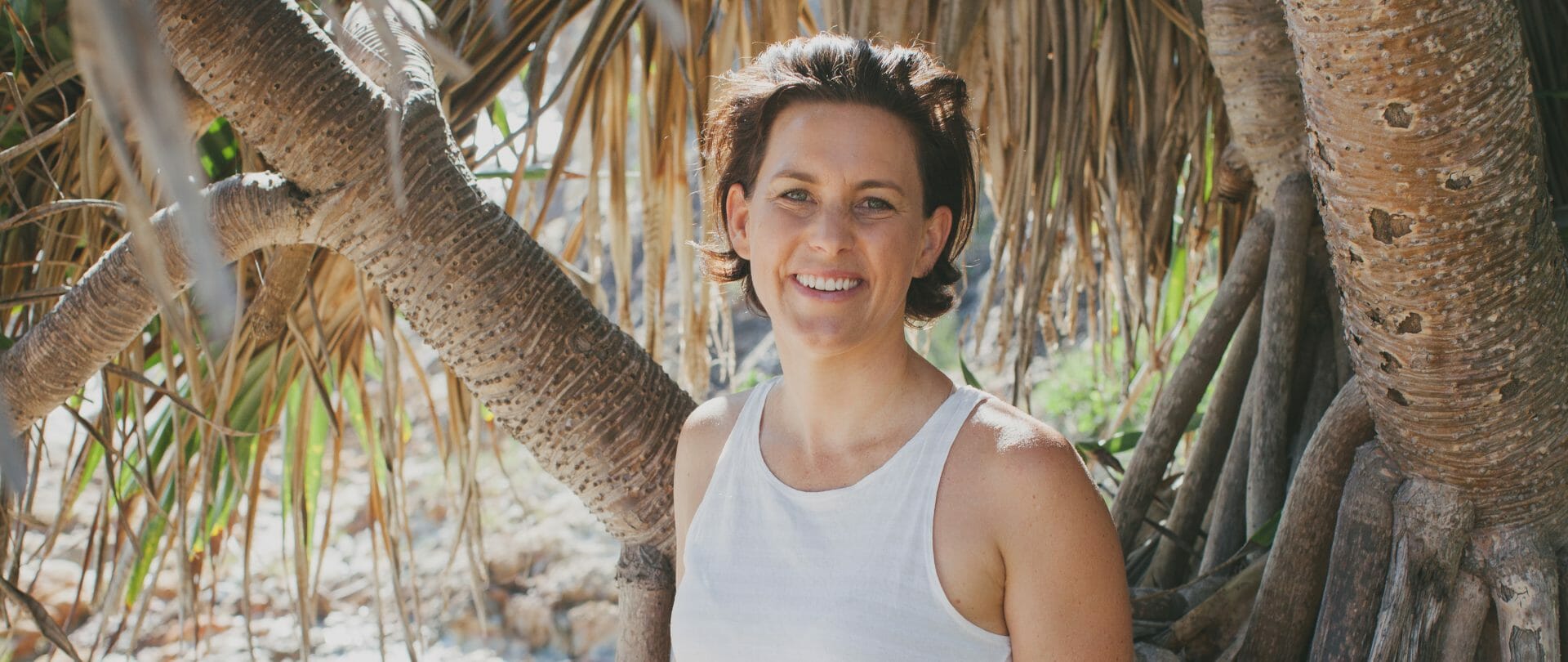Great Scott! The story of Anna and her anemones
This is the story of a girl who loved the ocean and dreamed of exploring that magical, mystical underwater world that so captivated her.
Anna’s wonderment took hold as she went about her childhood in suburban…Canberra? Admittedly, with the ACT being landlocked, it’s not the most likely of places for dreams of that gorgeous big blue, but it was during holidays with her grandparents on the NSW south coast that Anna’s passion came to life.
She has vivid memories of playing in rockpools and feeding squidgy anemones with periwinkles from the surrounding rocks. In high school, Anna moved to Bellingen and in living closer to the ocean, was keen to better understand it and protect the creatures within.
Those ‘squidgy’ things are now the focus of Anna’s academic career. That little girl from Canberra is Dr Anna Scott, Marine Biologist, Senior Lecturer at Southern Cross University (SCU) and a world leader on sea anemones “that provide homes for Nemo and Nemo’s cousins.”

I’m curious about the Pixar reference in this world of academia, but Anna finds it incredibly useful for helping people connect to her research. When she first started, the film hadn’t been released and people thought sea anemones were ‘those spiky things’ – sea urchins. “With Nemo being a household name, people can instantly associate with your work,” Anna says.
Anna is based at the National Marine Science Centre in Coffs Harbour which is owned by SCU. It is a centre that draws researchers from all around the world because of its proximity to the Solitary Islands Marine Park. The Solitary Islands Marine Park spans some 75 kilometres of glorious coastline (72,000 hectares in all) and encompasses estuaries, submerged reefs, headlands, beaches and five offshore islands. Established in 1991, the park and its marine and estuarine habitats represent extraordinary biodiversity due to the coexistence of tropical, sub-tropical and temperate species. The marine park supports an estimated 700 species of fish and extensive coral communities.
For Anna, there is no better place for her work. And that’s a fact. “Here, we have the world’s highest density of anemones and anemonefish. Throughout the rest of Indo-Pacific they tend to be quite rare, and densities are low. From within an amazing research facility, I can study a thriving population and answer questions without impacting that population or causing any damage – vital from a research point of view.” Besides, says Anna, “it’s a wonderful place to be underwater.”
It’s lovely to talk with someone so enthralled by their work – even years into it. Anna says she is more passionate now than ever. “I get to go to some of the most beautiful reefs in the world and answer questions about how those reefs function and how they might persist into the future. I feel really privileged to be able to do that as part of my job and as part of my life. It’s very special.”
What’s interesting in talking to Anna is realising how staggeringly little we know about our oceans, even with the best of the best studying them. “Our marine world is much less known than our terrestrial world, which means there a lot of questions for us to answer. The more I learn, the more I realise how many unknowns there are.”
It was ‘unknowns’ that led Anna to her PhD research. On Heron Island she witnessed mass coral spawning (reproduction) which she describes as “one of nature’s most wonderful and spectacular events”. Like an upside-down undersea snowstorm. Anemones were also spawning which Anna found utterly compelling. She wanted to know more but found that little was known about their sexual reproductive biology. And with the world’s largest density of anemones and anemonefish located in the marine park right by her home town, Anna understood that she had an exciting path ahead.

Well, it wasn’t all exciting. There were many late nights of leaning over tanks that replicated natural conditions for the anemone, to see the spawning occur. From dusk until late into the evening for 10 months, Anna would watch and wait. And watch and wait some more. Fortunately, her patience was rewarded with a ground-breaking result. Anna, still in her early 20s, became the first person in the world to scientifically document the phenomenon of host anemone spawning. Then, not long after, a movie about a certain fish with a friend called Dory came out and everyone understood what fish and habitat she was talking about!
Anna is one of many academics undertaking essential research at the National Marine Science Centre. Others are focussing on marine mammals such as whales and dolphins, climate change, aquaculture and marine debris. There are biogeochemists looking at nutrients in our marine systems and those with a specific interest in sharks and beach safety doing a lot of drone work.
“We all collaborate internationally and everyone in this building is asking really interesting questions. Those questions are not only important scientifically but also practically in that we use the information from our research to make a difference in how we protect our marine environment.”
Understandably for Anna and her colleagues at the centre, the thinking is that the more people know about our marine environment, the more likely they are to want to protect it.
“People usually don’t have a high level of care for something they don’t know or understand,” she says. “Our oceans are so important and are under pressure from climate change, human use and pollutants. We need to minimize our impact for future generations. I know it sounds cheesy, but our ocean communities won’t continue to exist as we know them today unless we prioritise their protection.” It’s certainly not cheesy – it’s absolutely necessary for us all to understand.
When we chatted, Anna was also preparing for a trip to the Lizard Island Research Station a few days later. Whether this would mark another fascinating turning point in her research, only time will tell. What a beautiful journey that little girl, so enchanted by the sea, has had so far.
Dr Anna Scott is based at Southern Cross University’s National Marine Science Centre. In addition to being a research centre and university teaching environment, the centre has a great public outreach program and offers educational visits to the Solitary Islands Aquarium.
For more on when to visit the aquarium or for information on the Sea Education Activities (SEA) schools program phone (+61 2) 6648 3931 or go to www.solitaryislandsaqauarium.com


